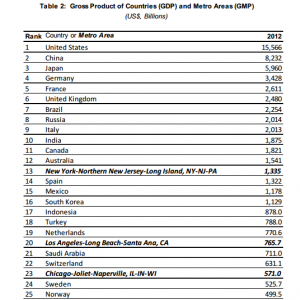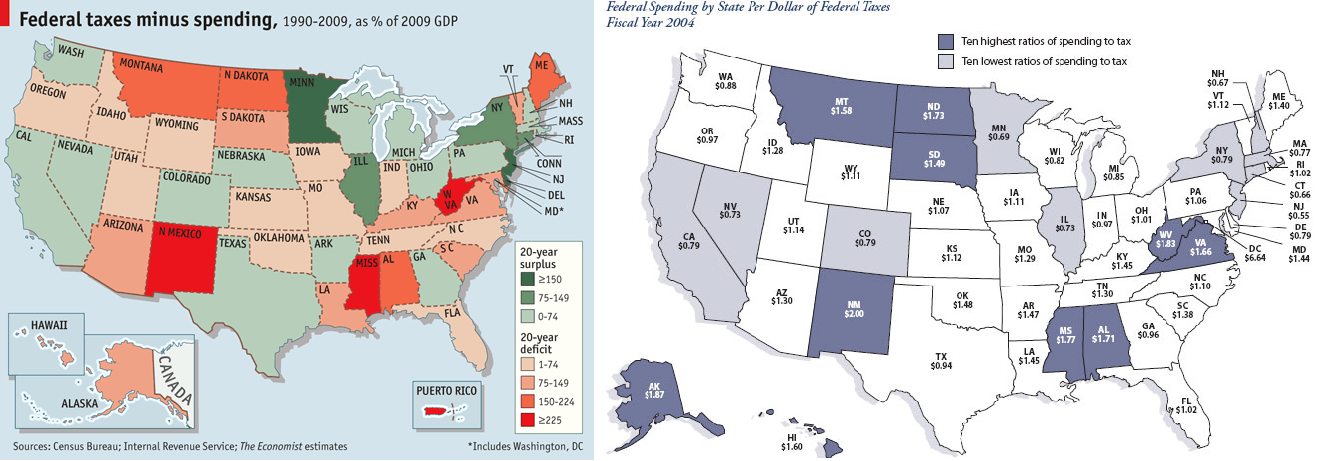President Obama visited New York this week to call on Congress to act on his five year transportation funding plan, which would increase federal spending beyond current levels by $23 billion per year — a 44 percent increase. As the Highway Trust Fund plunges towards insolvency and with Congress expected to drag its collective feet, the President’s push is great news.

As MTR highlighted in an earlier post, federal transportation investments see the greatest economic benefit if they are directed to metropolitan areas. President Obama’s visit presented an opportunity to highlight the infrastructure needs of a region in need of serious transportation upgrades.
Investing in the infrastructure of the tri-state region provides incredible bang for the nation’s buck. New York is by far the largest generator of gross domestic product in the country. Its GDP of $1.335 trillion in 2012 nearly equals the nation’s second and third largest metro areas (Los Angeles and Chicago) combined, and, if it were an independent nation, it would be the world’s 13th largest economy.
The metro area also pays a great deal more in taxes than it gets back in federal services. If the country were to be run like a business, the New York City metro area — the most productive “department” — would indeed be getting lots more funding. Yet for some reason, the opposite is true. In fact, states in the region receive the lowest return on federal taxes paid in the nation, measured as a percentage of state GDP, as well as tax dollars paid versus dollars received:

To remain as productive, more money is required to keep workers moving – you can’t go to work if you can’t get to work. Ridership numbers for the New York City metropolitan area’s transit systems are high, carrying more people than the nation’s busiest roadways. In fact, the combined ridership is over 4 billion trips per year, or over 11 million trips per day. Some good places to ramp up investments would be full-fledged BRT in the tri-state region (along the Tappan Zee Bridge corridor, in New York City, in Bergen County, New Jersey and in Suffolk County on Long Island), the existing New York City subway system , all of which are in dire need of repairs, and all of which alleviate road congestion.
But the economic benefits of increased funding for the New York City metro area don’t stop once outside the region’s physical limits. Investment in regional rail infrastructure would also benefit the Northeast Corridor, which connects four of the nation’s 10 largest metropolitan areas, and generates $3 trillion in economic activity each year.
One piece of at-risk infrastructure along the Northeast Corridor that could weigh down the region’s economy if not addressed soon is the need for greater redundancy in the Hudson River rail tunnels, which would have been upgraded if the Access to the Region’s Core project weren’t shortsightedly scuttled by New Jersey Governor Chris Christie in 2010.

The shortsightedness on the Hudson River tunnels was the plan supported by the powers that were guaranteeing maximum cost for minimum benefit and maximum operational difficulty. Governor Christie can be faulted for not more vigorously pursing the better Amtrak alternative and New York state and city for not being willing to put more money and effort into it even though the benefits analysis showed that those entities would get more benefit than New Jersey would.
[…] and NYCT in more depth, but one thing is certain: the New York region, and the United States’ economy, depend upon a robust transit network in the metropolitan region. A fully-funded, five-year MTA […]
[…] And with respect to the NYC metropolitan region, TSTC explained: […]
[…] that the MTA system is essential to supporting a regional economy and meeting the state’s climate change […]